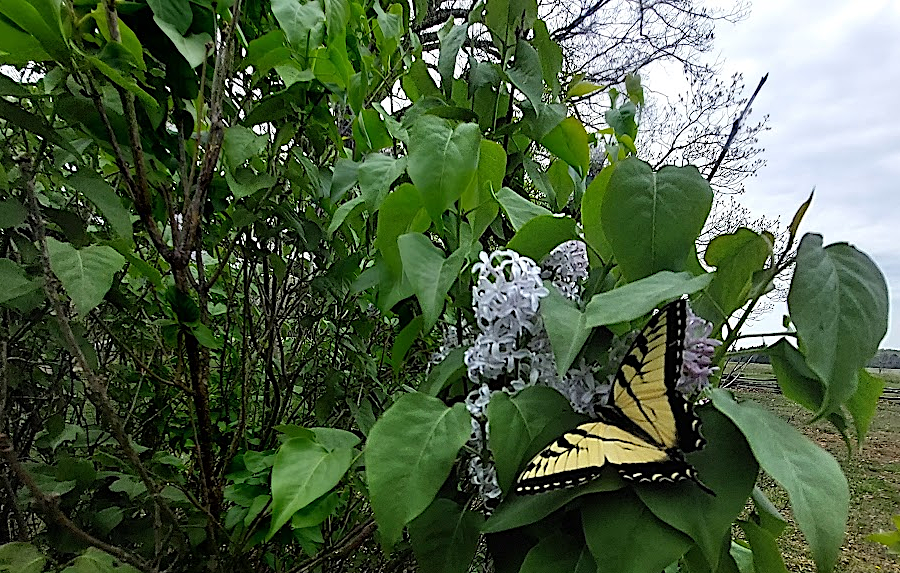
Eastern tiger swallowtail (Papilio glaucus) on lilac flowers

Eastern tiger swallowtail (Papilio glaucus) on lilac flowers
As the human population grows in Virginia, habitat is transformed and wildlife populations are affected. Clearing the forests for agriculture in the 1600-1800's, and the expansion of the suburbs in the 1900's, had the greatest impact. Some species, such as the passenger pigeon, will never be seen again. Others, such as the buffalo, will never reappear in the wild in Virginia. Some, such as the pileated woodpecker, are struggling to survive in habitat that has been fragmented by roads and fields.
Butterflies and moths, however, have the potential to survive the transformation of Virginia's natural setting. These insects are able to fly to isolated pockets of habitat, including gardens planted in suburbia intentionally to attract butterflies. The species composition of the butterflies and moths of Virginia has changed as forests were replaced with fields, but future generations of Virginians may be able to enjoy some wildlife right in front yards.
The Common Buckeye butterfly (Junonia coenia) winters in Florida, but moves seasonally into Virginia and points north:1

the Common Buckeye butterfly migrates from Florida into Virginia for the summer
Source: US Fish and Wildlife Service, Common Buckeye Butterfly (Junonia coenia)
However, butterfly populations declined nationwide by 20% between 2000-2020, a rate of 1.3% annually. Key factors are the increased use of pesticides with neonicotinoids and habitat loss, as the food plants required by caterpillars are eliminated by homeowners and farmers as "weeds." Climate change may explain why butterfly populations were increasing in northern latitudes while declining in southern regions.
As one biologist noted, landowners have the opportunity to alter the way they use pesticides and quickly enhance the potential for increasing butterfly populations:2